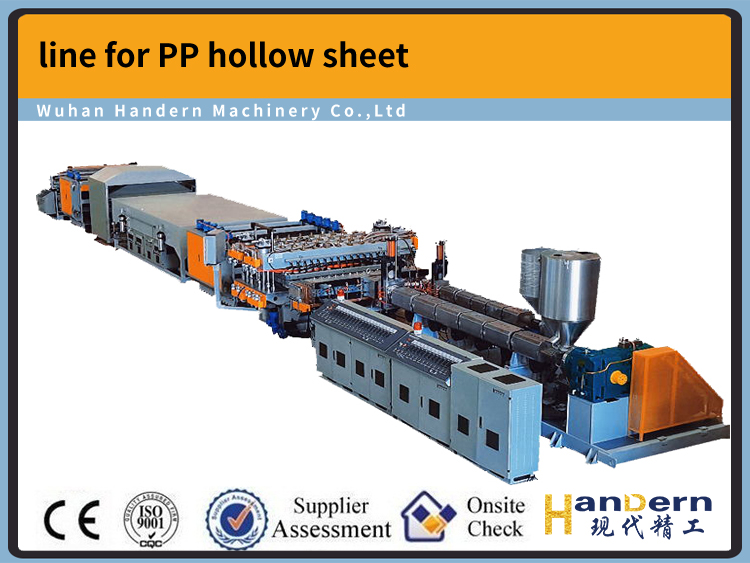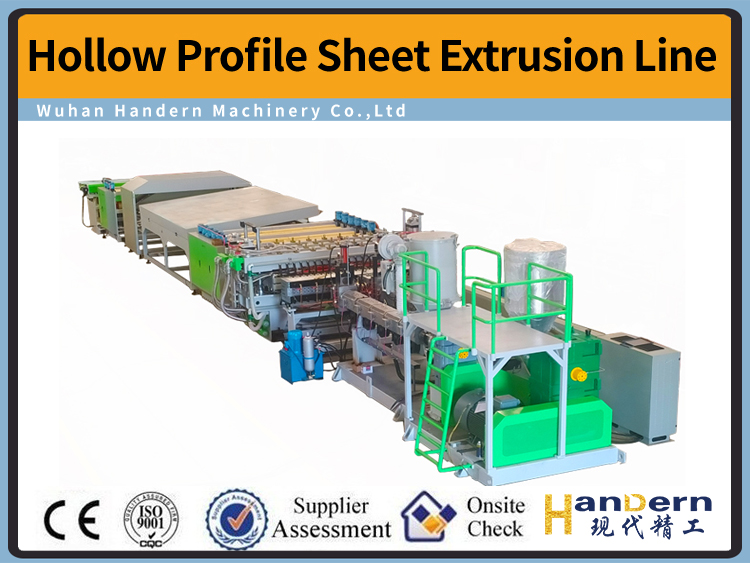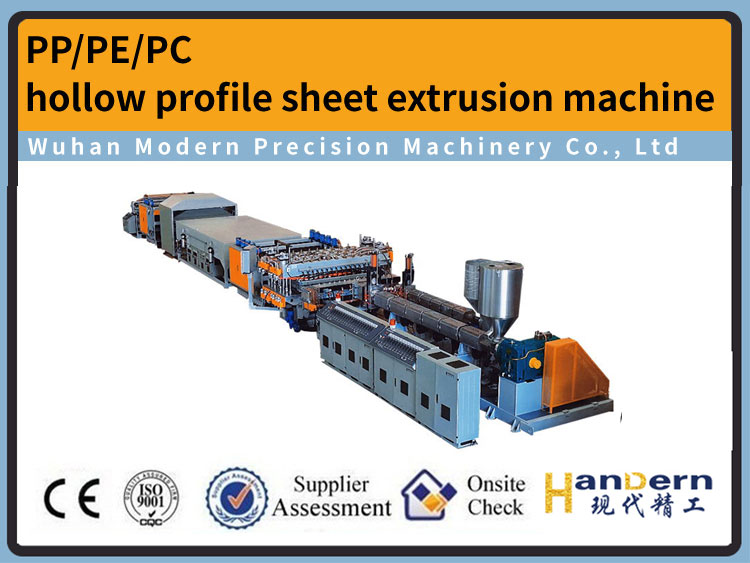What is the general price of a hollow sheet production line?
DATE:2025/8/8 14:19:12 / READ: / SOURCE:This station

Hollow sheet production lines (also known as PP hollow sheet production lines, plastic corrugated sheet production lines) vary greatly in price, ranging from several hundred thousand RMB to tens of millions of RMB.
Key influencing factors
Semi-automatic lines: Lower price (approximately ¥300,000 - ¥1,500,000 RMB), requiring more manual operations (such as cutting, stacking).
Fully automatic lines: Higher price (approximately ¥1,000,000 - ¥10,000,000+ RMB), including automatic traction, online cutting, automatic stacking, automatic packing, etc., with high production efficiency and low labor demand.
Production line configuration and specifications:
Sheet width: The width of sheets that can be produced (e.g., 1400mm, 1800mm, 2300mm, 2400mm, 2600mm, 2800mm, 3200mm, 3600mm, etc.). The larger the width, the larger the equipment specification and the higher the price.
Sheet thickness range: The range of sheet thicknesses that can be produced (e.g., 2mm-6mm, 7mm-12mm, 12mm-18mm, etc.). The wider the range or the ability to produce extra-thick/ultra-thin sheets, the higher the technical requirements and the higher the price.
Production speed: The maximum operating speed of the production line (meters per minute). The faster the speed, the higher the requirements for equipment precision and stability, and the more expensive the price.
Extruder specifications: Extruder size (screw diameter, e.g., Φ65mm, Φ90mm, Φ120mm, etc.), quantity (single machine or co-extrusion), brand, driving power, etc. This is a core component, directly affecting production capacity and cost.
Mold: Mold structure (single layer, multi-layer co-extrusion), width, precision, material, brand. Mold cost usually accounts for a considerable proportion of the entire line.
Post-processing equipment: Traction machine (number of rollers), length of cooling and shaping table, cutting machine (online flying saw or offline cutting), stacking machine (simple lifting platform or fully automatic robotic arm stacking), packing machine, etc. Automated post-processing equipment significantly increases costs.
Control system: PLC brand, human-machine interface, degree of automation, networking capability, etc. High-end control systems improve stability and operational convenience, but also increase costs.
Technological advancement:
Whether advanced technologies are adopted (such as high-efficiency and energy-saving extruders, precise temperature control, online thickness monitoring, automatic wall thickness adjustment, IoT remote monitoring, etc.) will significantly affect the price.
Raw materials:
Is the production line designed for a single raw material (e.g., pure PP) or can it handle co-extrusion (e.g., PP + recycled materials, PP + PE, PP + functional material layers)? Co-extrusion lines are more complex and expensive.
Production capacity requirements:
The higher the target annual output or hourly output requirement, the higher the specification of equipment usually needed, and the higher the price.
Degree of customization:
The price of standard production lines is relatively transparent. If there are special customization requirements (such as non-standard sizes, integration of special functions), the price will increase.
After-sales service and accessories:
The included warranty period, service response speed, and spare parts pricing strategy are also implied in the total equipment cost.
Important suggestions
Clarify requirements: First, be very clear about the specific specifications of your products (width, thickness, number of layers, color, raw materials), target production capacity, budget range, requirements for automation degree, factory conditions (space, electricity), etc.
Inquire from multiple sources: Provide detailed requirements to equipment manufacturers at different levels to obtain formal quotation plans. Be sure to request a detailed configuration list and itemized quotations.
Inspect factories and prototypes: If possible, conduct on-site inspections of equipment manufacturers' factories, observe the actual operation of their equipment (especially the production of sheets with specifications similar to your requirements), and understand the manufacturing process and quality control.
Pay attention to core components: Understand the brands and models of key components such as extruders, molds, and control systems.
Evaluate after-sales service: Learn in detail about warranty terms, service response time, spare parts supply and prices, technical training support, etc. This is crucial for long-term stable production.
Consider total cost of ownership: In addition to the equipment purchase price, also consider installation and commissioning fees, transportation fees, possible factory renovation fees, future maintenance fees, energy consumption, labor costs, etc.
Author:admin




